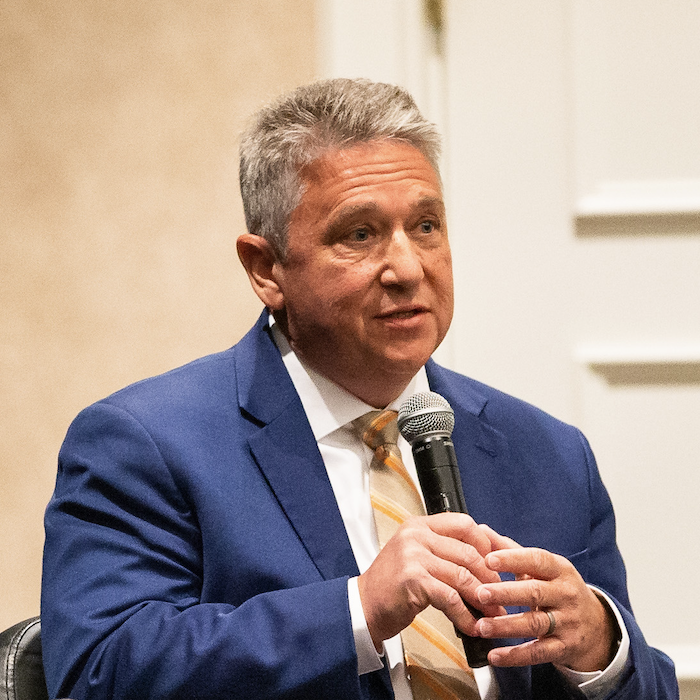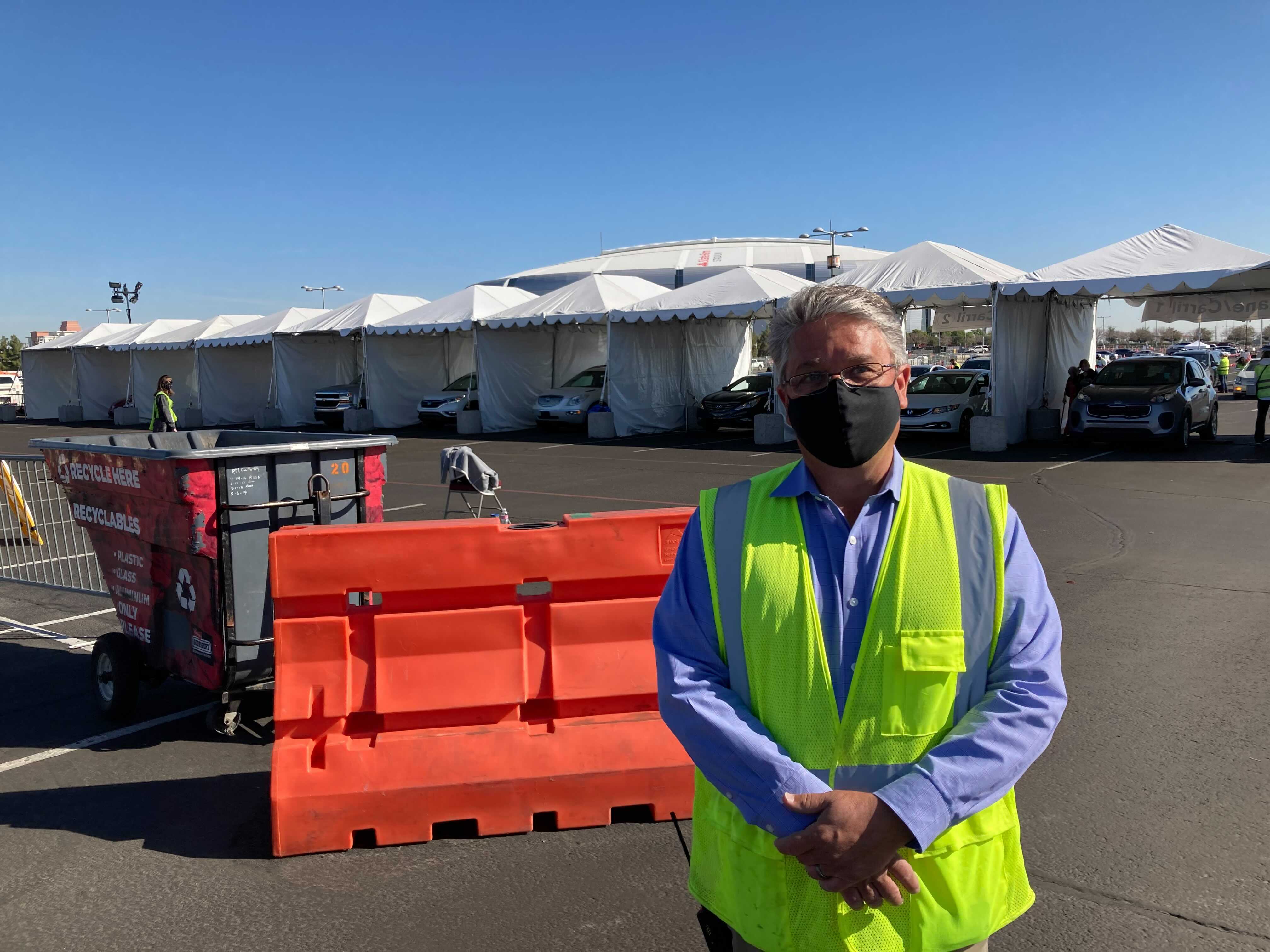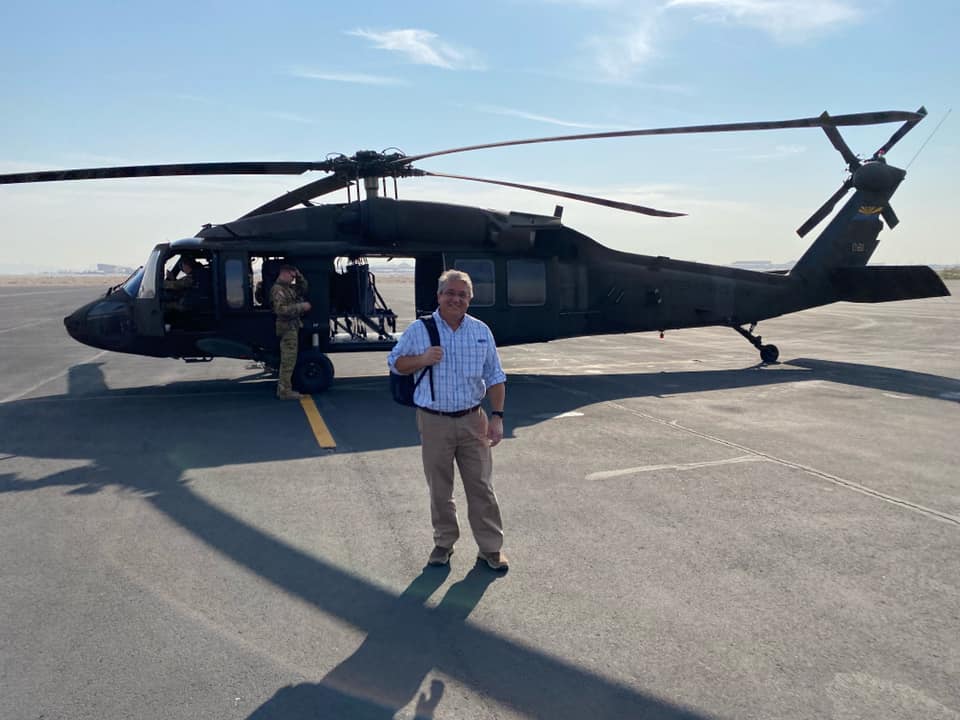Alumni Spotlights — David Thomas

Featuring Alumni from the University of Memphis
Department of Physics and Materials Science
Mr. David Thomas attended the University of Memphis (UofM) from 1991 until graduation in 1996. During his time at the UofM he was involved in research to extend the lifetime of biomedical implant materials. Since graduation he has applied his training to high impact programs as a scientist, team leader, entrepreneur, and executive. His work has been very diverse and includes development of devices for diagnosis and treatment of vision problems, developing technology for the defense sector, and facilitating and enabling the expansion of space exploration programs around the world. Further biographical information is provided here. We are fortunate that Mr. Thomas kindly agreed to share some of his experiences and thoughts about Physics and life with us. We hope that you enjoy them and find some inspiration and guidance.
Personal note: This post is intended for those readers who, like me, began their journey with humble beginnings.
Physics has provided the foundation on which I have been able to experience a rich and rewarding career. The ability to apply my training in numerous jobs has allowed me to try a variety of career opportunities. In my current role, I am involved in helping emerging spacefaring countries participate in space exploration. We are creating affordable access to lunar missions and working to build capacity around the world in connected innovation ecosystems. Prior to joining Arizona State University, I was a scientist for over 20 years, with the bulk of that time focused on developing new technology for the defense sector. As a graduate student at the University of Memphis, I was fortunate to be involved with a company developing technologies for LASIK surgery and securing patents for diagnostic devices for human vision. These experiences were made possible because of the training I received at the UofM.
In retrospect these experiences are something of a surprise to me and should be considered in the light of very humble beginnings. Due to a dysfunctional home life, I was a mediocre student in high school with poor grades and no plans for academic pursuits after graduation. By the age of 20, I was married and had worked various jobs, most in the construction industry. Six years after marriage I signed up for a two-year program at a local community college, laboring during the day and taking classes at night. It was at this modest trade school where I discovered I could do well academically and the seeds of a love for learning were planted. After receiving a transfer scholarship, I quit my job and enrolled full time at the UofM.
Fast forward to the near-present time. In January 2021 we had been through nearly a year of the pandemic. The future was uncertain, and the COVID-19 vaccine had just been approved by the FDA. I was asked to design and build Arizona’s largest mass vaccination site, later called “a model for the nation” by President Biden. We had only six days to build the site and launch 24-7 operations. It was successful, and our team proceeded to build and provide operations for five more sites, delivering over 1.3 million vaccine doses in six months. When I was asked, “What training did you have to design a mass vaccination site?” I could connect the dots backward in time to the Physics Department at the University of Memphis. I learned how to manage large teams and complex logistics from test events executed for Department of Defense (DoD). The test events were informed by my experience in a variety of DoD and Department of Energy (DoE) laboratories around the country. The pursuit of work at the labs was driven by a love of experimental Physics, which came directly from my experience in the Physics Department at the UofM.
 |
| UofM Alumni (presently at Arizona State University) David Thomas outside of the vaccination site at the Arizona Cardinal's stadium. (Photography by Peter O'Dowd/Here & Now and featured in article on WBUR.) |
There were a few people who opened doors for me along the way. I entered the Mechanical Engineering program in the early 1990’s and began asking faculty and peers about research opportunities. A professor, who later became the chair of the department, encouraged my fascination with research. Dr. John Hochstein was the first “door opener” who made a significant impact on my career. I later learned that the Chair of the Physics Department had a need for research assistants, and I was introduced to Dr. Shah Jahan, the second door opener. Dr. Jahan introduced me to the amazing world of spectroscopy. After classes in the Mechanical Engineering program, I worked in the Physics Department labs performing experiments with Electron Paramagnetic Resonance (EPR) and optical spectroscopy techniques. In those days, the EPR system was a rack of equipment built by hand and not shielded very well from external electromagnetic interference. When a thunderstorm approached the campus, we would have to shut down the equipment and wait for the storm to pass before continuing experimentation. Later we were able to set up modern EPR systems, which opened a new world of discovery. We developed a method to quantify molecular damage from sterilization of polymers used for hip and knee replacements and had the chance to work with the country’s leading orthopedic manufacturers.
When I told Dr. Jahan of my desire to go to a national laboratory, I was pleasantly surprised by his response. He immediately introduced me to a former UofM Physics Professor who was working in the Materials Science Division of Los Alamos National Laboratory (LANL). I applied for a Research Associate Internship at LANL the year I received a BS from the Mechanical Engineering Department, becoming the first person in my family to obtain a university degree. I spent a life-changing summer at LANL working for Dr. David Wayne Cooke, the third door opener. It was at LANL where I knew I wanted to study Physics. At that time, the US was still part of the consortium of nations supporting the International Thermonuclear Experimental Reactor (ITER) program. I was inspired by the way experimental instruments could elucidate invisible molecular interactions and produce data that explained device performance. Physics became more than a topic to study; it became my passion. The application of Physics to find answers to compelling questions became my career purpose.
The academic experience in the MS program in Physics at the UofM furthered my love of experimentation. Working with Dr. Cooke, Dr. Jahan, and others we published several papers. The thesis project on the effects of radiation in fiber optics used to remotely monitor radioactive environments included building a new cryogenic sample system that allowed us to better characterize defect centers created by X-rays. The aspect I love most about having a Physics degree is the breadth of applications it has allowed me to pursue. I have participated in projects measuring the profile of high energy lasers, development of new microelectromechanical systems (MEMS) and nanoscale technology, physics models to improve energy storage, terahertz imaging systems, and numerous others. For the last ten years I have been involved in what I call, “the business of science,” building sustainable teams and institutes. My goal is to open doors for as many people as possible to address the big challenges of our time. I continue to be motivated by my experience at the UofM.

I have been fortunate to travel around the world and often meet people who are living in modest socio-economic circumstances, who are underrepresented in STEM fields, and do not see role models who look like them. There are many who feel their dreams may be out of reach. When I meet these people, I try to share my story. I say your dreams are relevant, and with a bit of tenacity and a few open doors you can achieve them. There will be many challenges along the way. There will be setbacks and even failures. I have experienced extraordinary highs and lows throughout my journey. This post is intended for those readers who, like me, began their journey with humble beginnings. Hopefully, my experience validates what you already know. If you have a passion and are diligent in acquiring skill, you will eventually find the opportunity to apply that passion to projects you love. If you do not give up, at some point in the future you will look back and realize you made a difference.
For more information about David Thomas and his work, please visit the MILO Institute page or his LinkedIn page.
